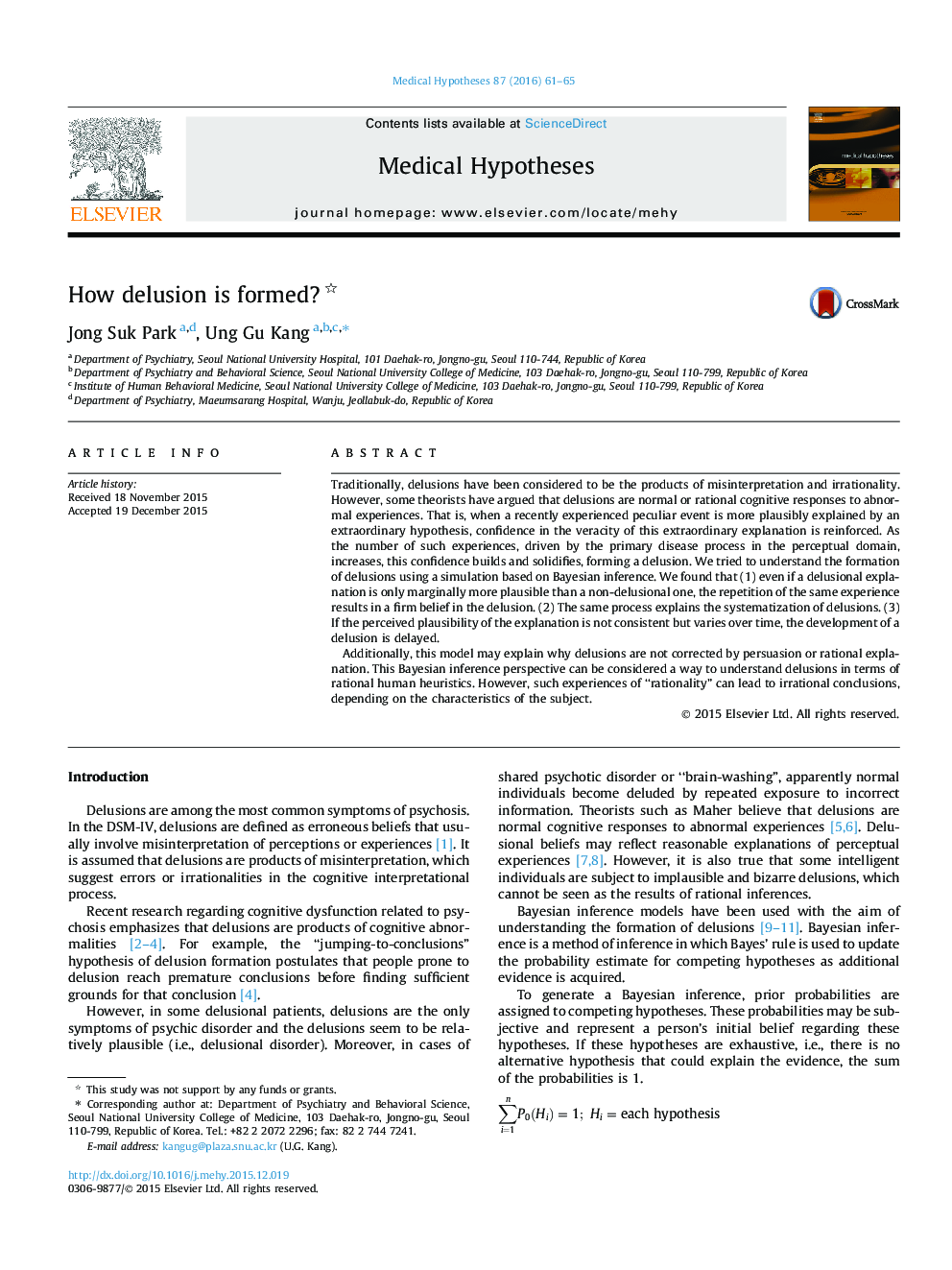| کد مقاله | کد نشریه | سال انتشار | مقاله انگلیسی | نسخه تمام متن |
|---|---|---|---|---|
| 5810736 | 1556558 | 2016 | 5 صفحه PDF | دانلود رایگان |

Traditionally, delusions have been considered to be the products of misinterpretation and irrationality. However, some theorists have argued that delusions are normal or rational cognitive responses to abnormal experiences. That is, when a recently experienced peculiar event is more plausibly explained by an extraordinary hypothesis, confidence in the veracity of this extraordinary explanation is reinforced. As the number of such experiences, driven by the primary disease process in the perceptual domain, increases, this confidence builds and solidifies, forming a delusion. We tried to understand the formation of delusions using a simulation based on Bayesian inference. We found that (1) even if a delusional explanation is only marginally more plausible than a non-delusional one, the repetition of the same experience results in a firm belief in the delusion. (2) The same process explains the systematization of delusions. (3) If the perceived plausibility of the explanation is not consistent but varies over time, the development of a delusion is delayed.Additionally, this model may explain why delusions are not corrected by persuasion or rational explanation. This Bayesian inference perspective can be considered a way to understand delusions in terms of rational human heuristics. However, such experiences of “rationality” can lead to irrational conclusions, depending on the characteristics of the subject.
Journal: Medical Hypotheses - Volume 87, February 2016, Pages 61-65